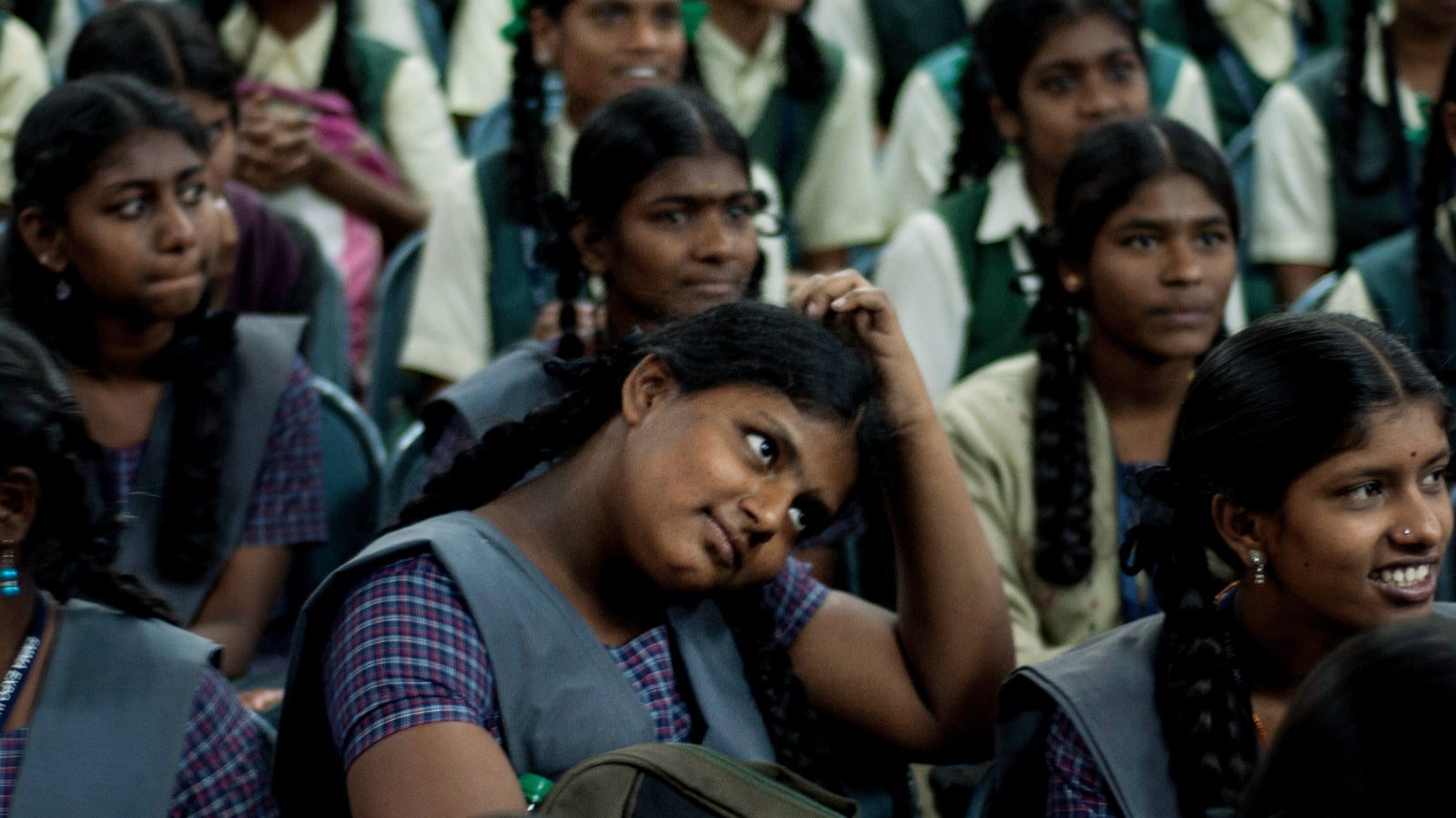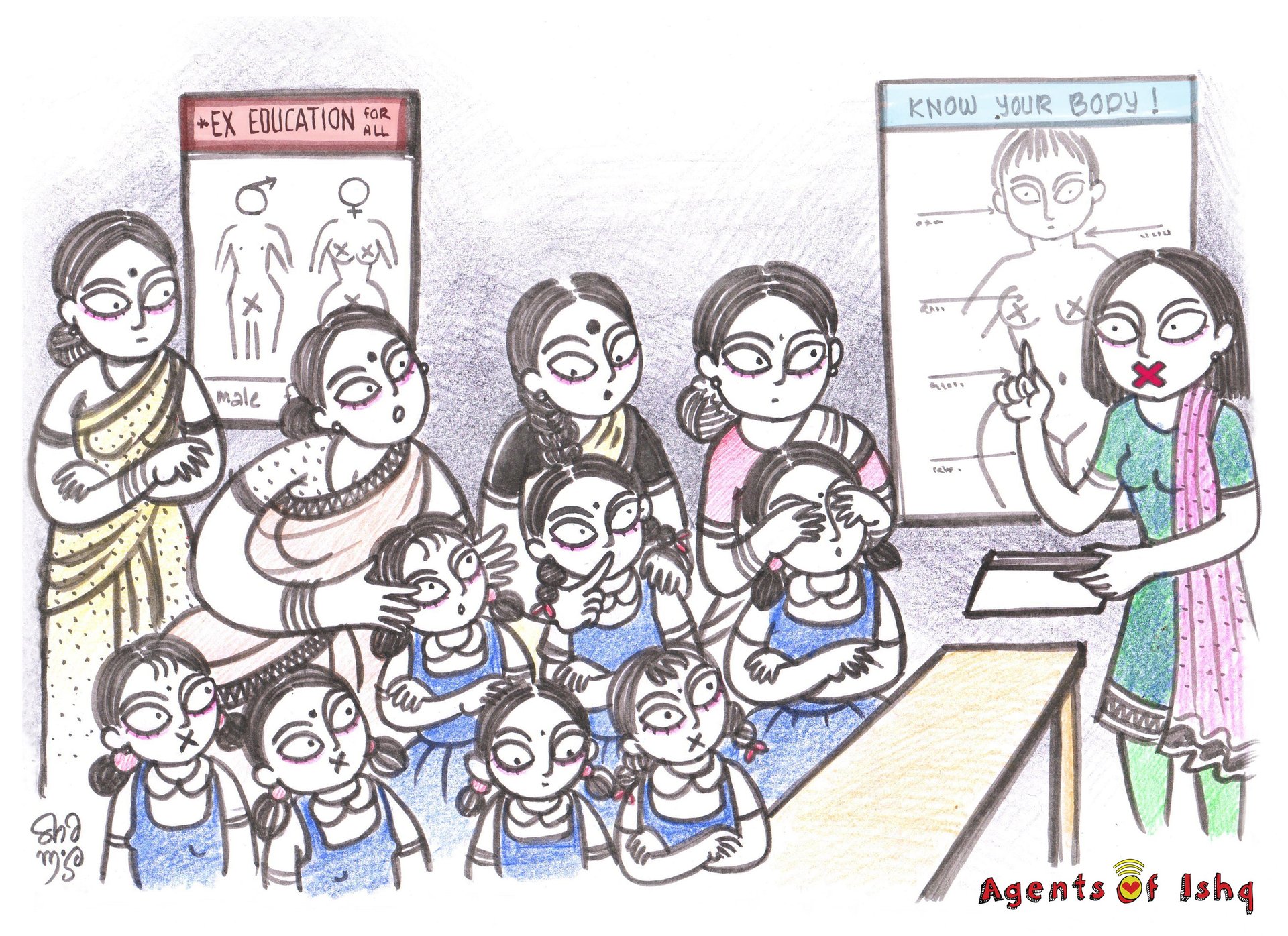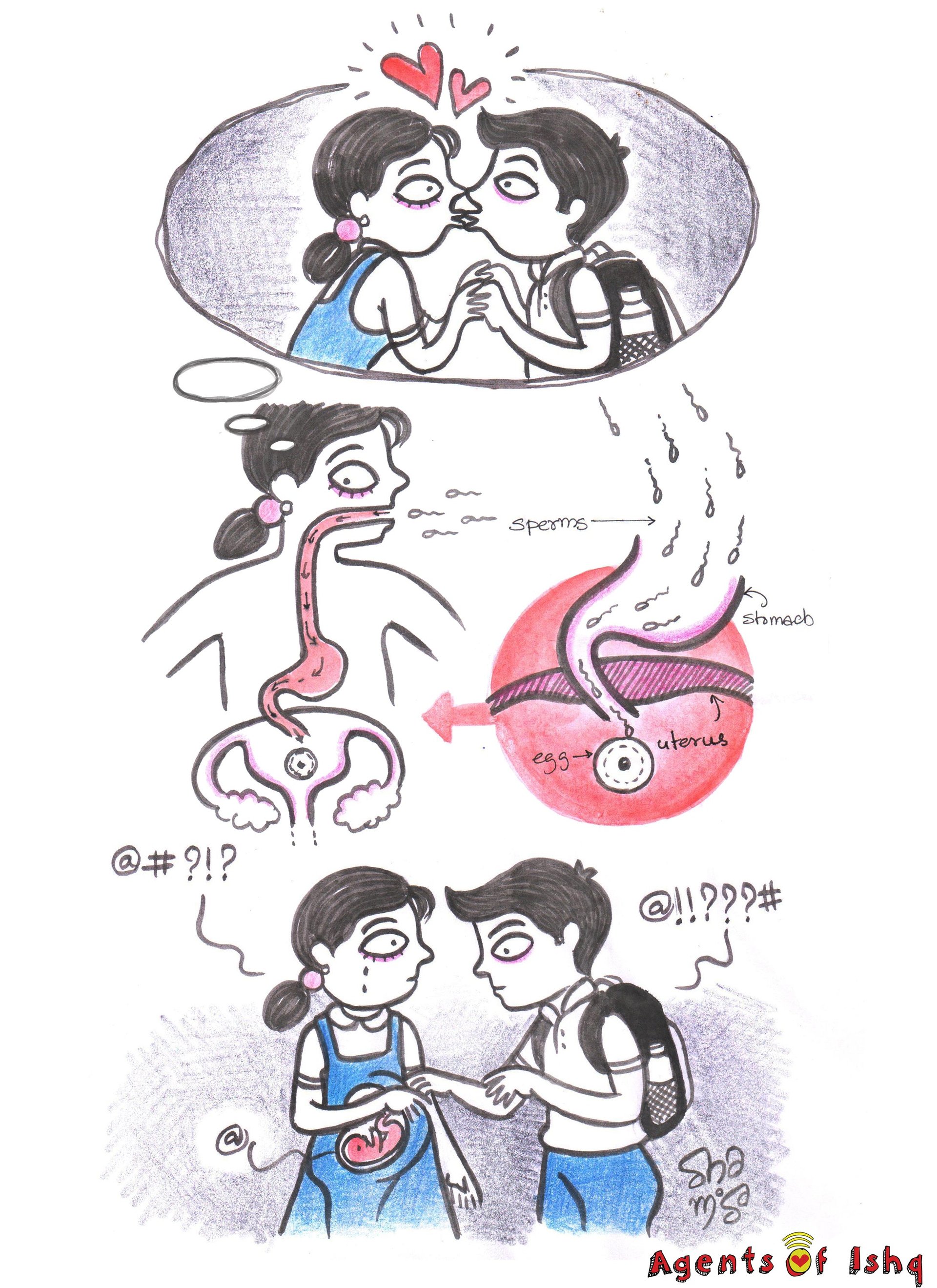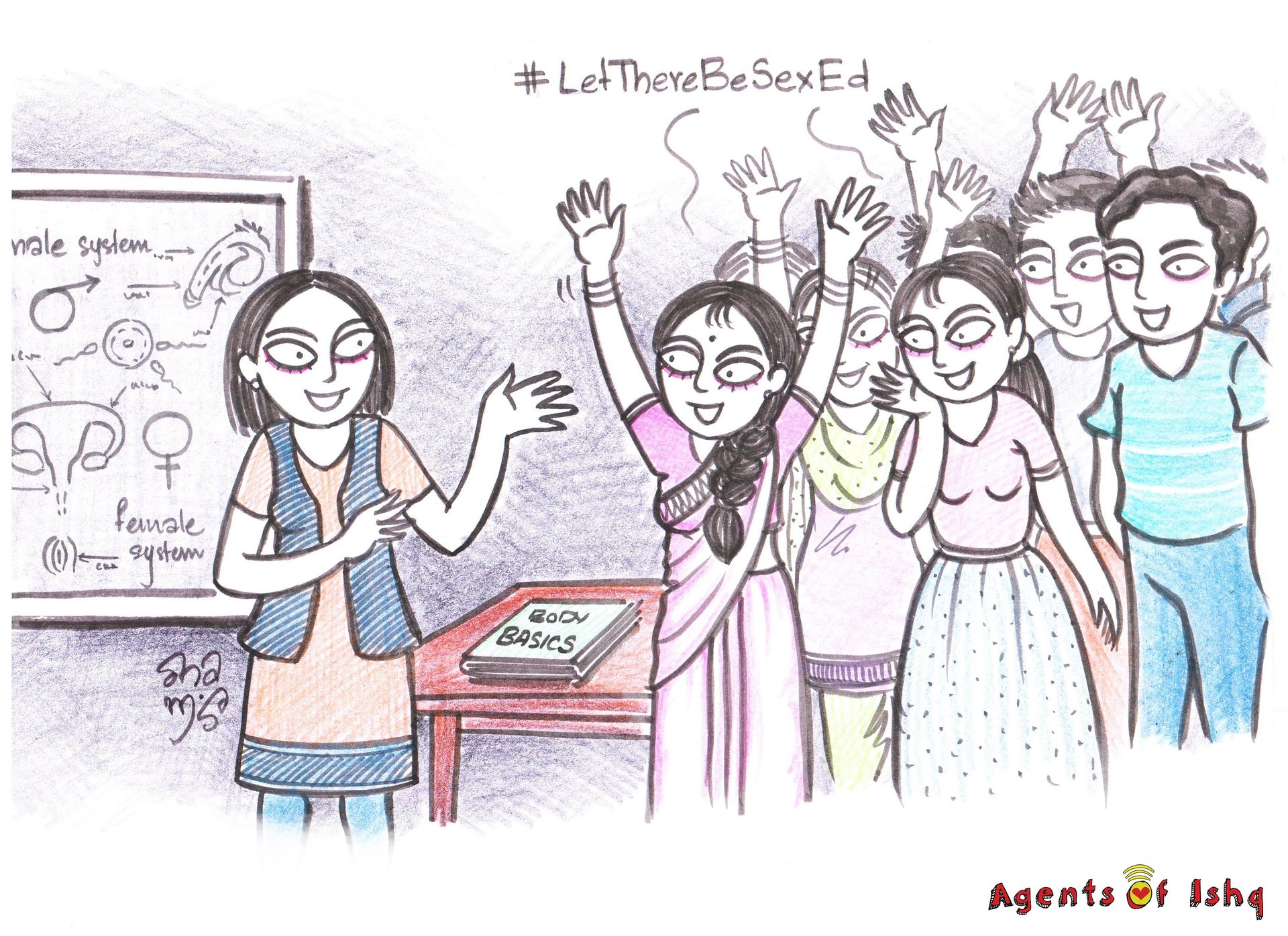“Don’t talk about sex”: The diary of an Indian sex educator
Her: “Is it possible for you to talk on menstruation and child sexual abuse to young girls?”


Her: “Is it possible for you to talk on menstruation and child sexual abuse to young girls?”
Me: “Sure. What age are they?”
Her: “Studying in class 5 and 6.”
Me: “Great. That shouldn’t be a problem.”
Her: “There is one thing though, you can’t talk about sex.”
Awkward silence followed.
I had no choice but to agree.
This was my first encounter with sex education.

I had been working with a feminist organisation in Hyderabad for a year already. I was 24 years old. I trained on legal rights, human rights, and legislations, but had not started training on sex, sexuality or reproductive health, for that matter. Those were reserved for experienced trainers. The above conversation was merely an introduction to the long list of conditions sex educators must work with.
To prepare for this class in a private school in a posh part of the city, I spent two weeks reading. I read about the human body. I studied how the parts looked. I read books for kids, for adults, for trainers, for teachers all in the hope that I would find the language to talk about sex without talking about sex. I worried about the language I could use. I worried about the details I could go into. I worried about the questions the girls would raise. A colleague advised me to stop fretting so much and just be honest and tell them everything I knew.
I walked into a classroom full of excited 10-12-year-old girls armed with illustrations, stories and honesty.
Yes, only girls.
It was a co-ed school. But the boys were not going to learn about the body.
An illustrated and simple path was used to explain the body to them. We had two hours to ourselves. They asked questions about bodily changes. I responded to them as simply as I could, trying to conceal my uncertainty. To add to my unease, female teachers sat around the classroom like word-police to monitor the words used. I survived my first session.
After that first experience, I got more relaxed at doing sex-ed classes. I realised how relevant it was for girls (and boys). I struggled trying to explain sex without saying sex. But in order to conduct this session, we negotiated to do a free session on gender, with both boys and girls in an older age group. The hope was that we would be able to touch some more complex issues as well while staying away from sex.
One day a young girl from the same school came up after class to say, “Ma’am, there is a girl in my class who’s had…” Her voice drifted. She obviously had been warned to not say the word. I was terrified. How will I respond to her without using the forbidden word? What am I supposed to ask her now? Where were these kids having sex without any adult catching them?

I found the words to ask her how she knew. She said she had seen them. The imagery that flooded my brain in those moments is hard to pen down. To be honest, I was shocked and worried for her and for the children she had seen engaging in the act. These kids were after all just 10. Seeing two people have sex must have raised all kinds of questions. But how could I even ask further?
After a few moments of silence, I summoned the courage to ask her to describe what she saw. When she explained, I realised she hadn’t seen them have sex but seen them kiss. I was relieved. But kissing was taboo for me to address as well. I struggled to find words to help ease her worries and to say that they weren’t actually having sex.
To explain menstruation or puberty, and not sex or how reproduction works often, means young girls and boys often have no idea HOW the sperm enters the female body. In their minds, it could have travelled through the mouth.
Till of course, they discover the internet or maybe porn.
As I continued on the path of sex education, it only got more complicated. This wasn’t an isolated experience where sex educators are encouraged to talk about menstruation, health, child sexual abuse and even violence without bringing up sex. We can explain the process of menstruation without talking about the male parts or male functions. But every time I left it at “when the sperm fertilises the egg”, a hand would go up in class, “But how?”
Soon I learnt that their curiousity and questions were not the only things I would have to tackle. We used illustrations while talking about the body, sex and sexuality, because we felt it would be easier to digest these concepts this way. Once my colleague and I were training a group of 80 women on sexual and reproductive rights in the old city of Hyderabad. There were women of all age groups, married, unmarried, young, sexually active, not active yet, the whole spectrum. We began with a few exercises through mapping of parts of the female body, including sexual parts and, in a box, the parts of the male body.
Girl: Woh wahan hota hai na. (“That” is there, no?)
Us: Woh kya hai? Aur kahan hai? Dikha toh do. (What is “that”? And where is it? Do show us.)
Girl: *giggle*
It took us a good hour-and-a-half to just get the parts of the body down on the chart paper. Many of them were not named and the shapes were unknown. Most of the women and girls didn’t know about the several orifices in the female body. Ovaries were the easiest to name. Fallopian tubes existed somewhere in that area. Vagina and uterus were hard to differentiate. They beat around the bush when asked about female pleasure. Anger, hate and pain were easier to pinpoint on the body. Pleasure, joy were more difficult. Giggles were the most common response.
They had trouble using the word ‘penis’; forget drawing it. We moved on by showing illustrations with close ups of the body parts. Particularly sexual body parts. We also circulated a labelled drawing of the female sexual parts to show the many different parts of the body. To our surprise, one of the girls in the front row began to weep. I nudged my colleague who continued the class as I led the girl outside the classroom.
Talking about the body, I have learnt, can lead to varied experiences. The young girl confessed that she had never seen a picture of a penis before. It was overwhelming for her. She told us that it was not like what she imagined or knew. She was shaken by the open conversation we were attempting.
I was unnaturally nervous when I had to address my first mixed gender group. I had fallen deep into a comfort zone of only addressing same-sex groups. Talk about this to both in the same room? Will they react well? Will the girls giggle? Will the boys be accepting?

I was reminded of my own biology class on reproduction. My teacher made little or no eye contact with us. We all giggled.
Not making eye-contact, was just like talking about menstruation, but not sex.
But I had learnt that eye-contact helped. And one could talk about sex while having to talk about something else.
It was a week-long course at a college in the city. HIV/AIDS was the chosen one. We had to talk about it (without talking about sex, remember). The only relief was that there weren’t any teachers in the room. After breaking up the class into small groups, we handed out sheets of paper on HIV/AIDS and we sneakily added questions on sex, sexuality, masturbation.
The questions were provocative, attempting to break myths about masturbation as well as sexual pleasures. The effect was beautiful. The class was initially shy, but as they realised this was a non-judgmental space they began to talk about how no one had ever used the word masturbation above a whisper. After their group work, we addressed the questions together. Some of them more vocal than the others but questions were answered in loud cheers of yes and no.
“Is masturbation dirty? – No.
Can we have sex during menstrual cycle? – Yes.
Condoms are 100% effective. – No.”
It was one of my most open and honest experiences during sex-ed. Students talked about how no one had ever spoken to them openly about sex, which had led to several misconceptions. Especially about the female body and pleasure. Unfortunately, when they discussed the class with their political sciences teacher, I received a look of disapproval from her the next day.
I did not make eye-contact. I just smiled to myself.
The sessions helped me see that it is never too late for a sex-ed class. But a safe (pun intended), fun and explorative space, where we can use the word sex, like we use other words, is what we need.
This piece originally appeared on Agents of Ishq. We welcome your comments at [email protected].